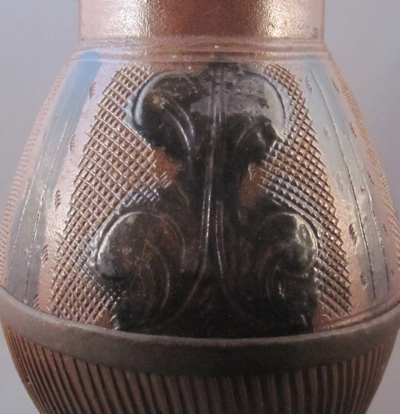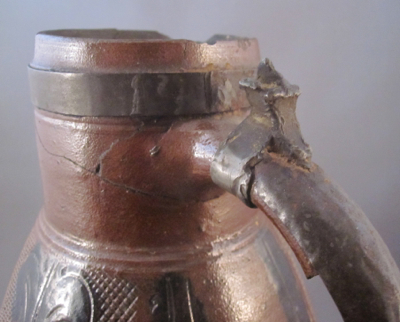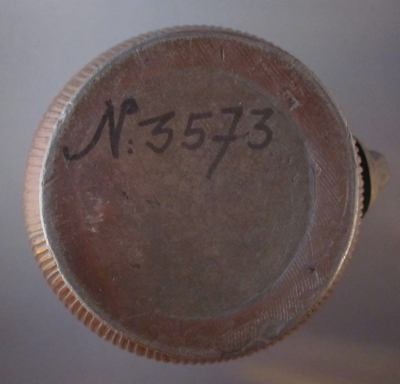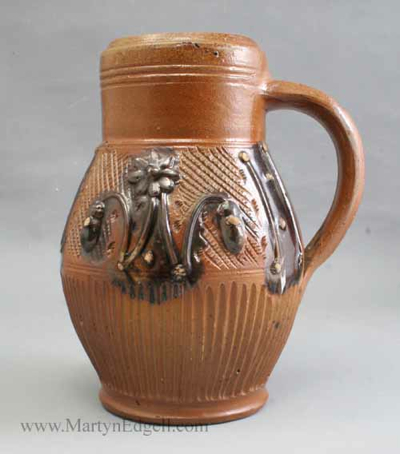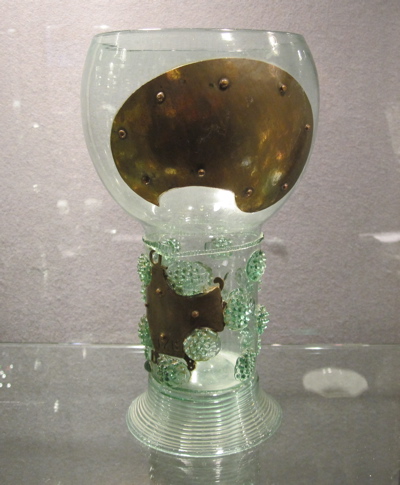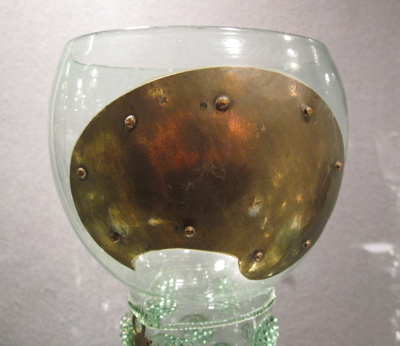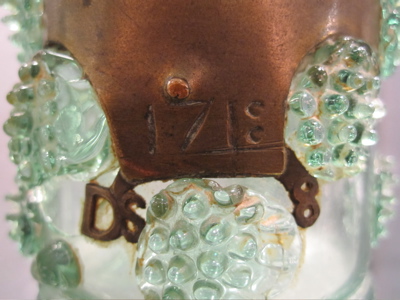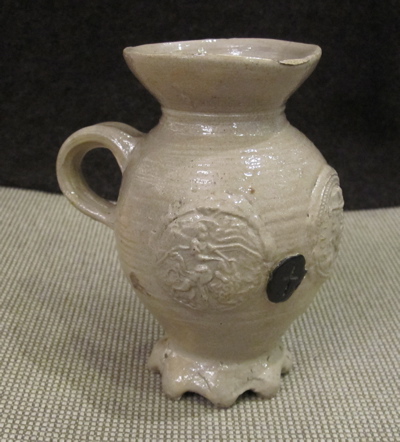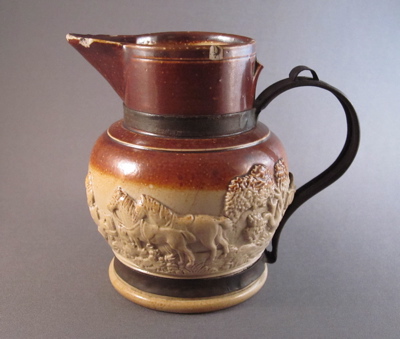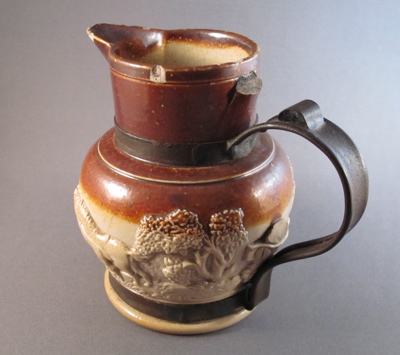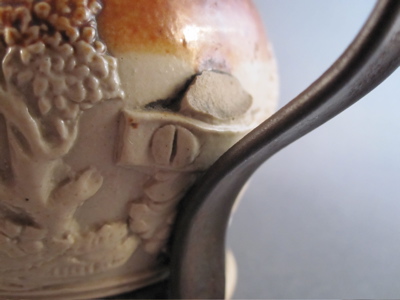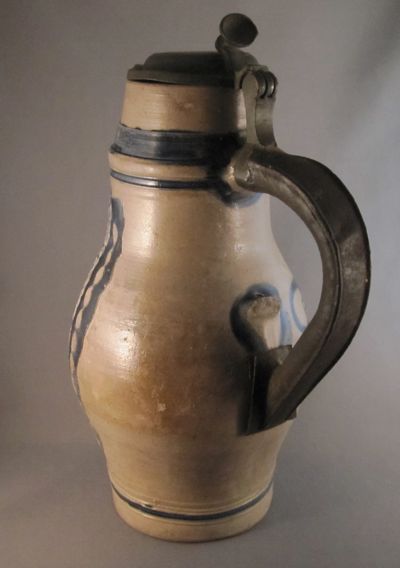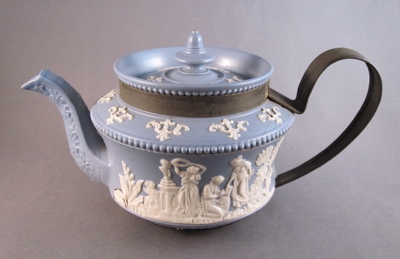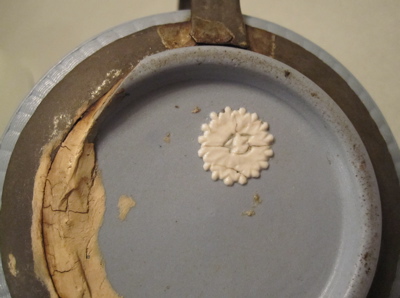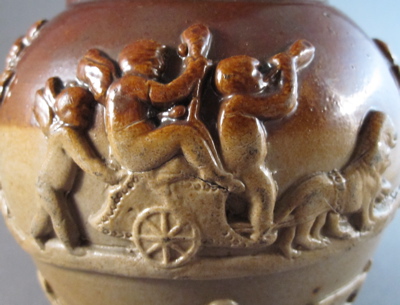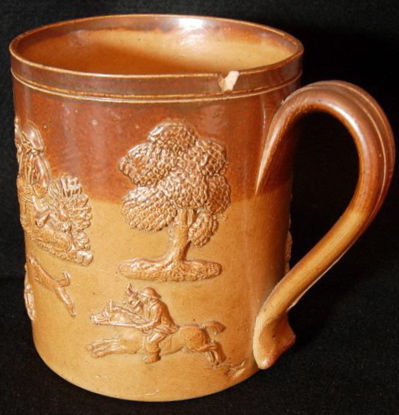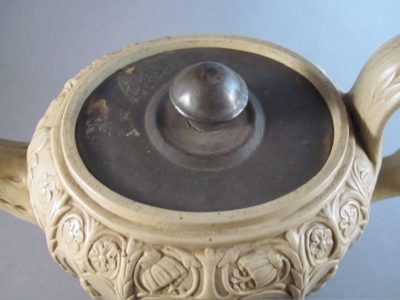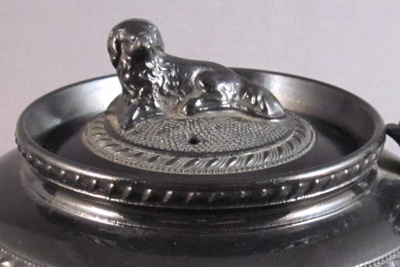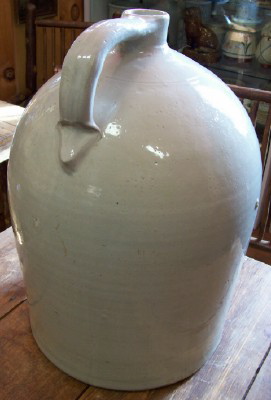This rustic brown stoneware jug with ovoid body was made in the Muskau region of Germany in the mid 1700s. It is decorated with incised stylized foliate against a crosshatched ground above vertical fluting and black glaze highlights. Remains of the original stoneware handle can be seen beneath the metal replacement. It is attached at the top to the remains of the pewter lid hinge and at the bottom using a horizontal metal band, blending in nicely and appearing to be a part of the original design. An additional horizontal band around the neck helps to stabilize the multiple cracks beneath. The original pewter mounted lid went missing long ago, which is not uncommon for a much-used flagon of this age. It measures nearly 9-1/2″ high.
This fine example has its original handle intact and shows what mine would have looked like before it broke and was brought to the local tinker for repair.
Photo courtesy of Martyn Edgell

